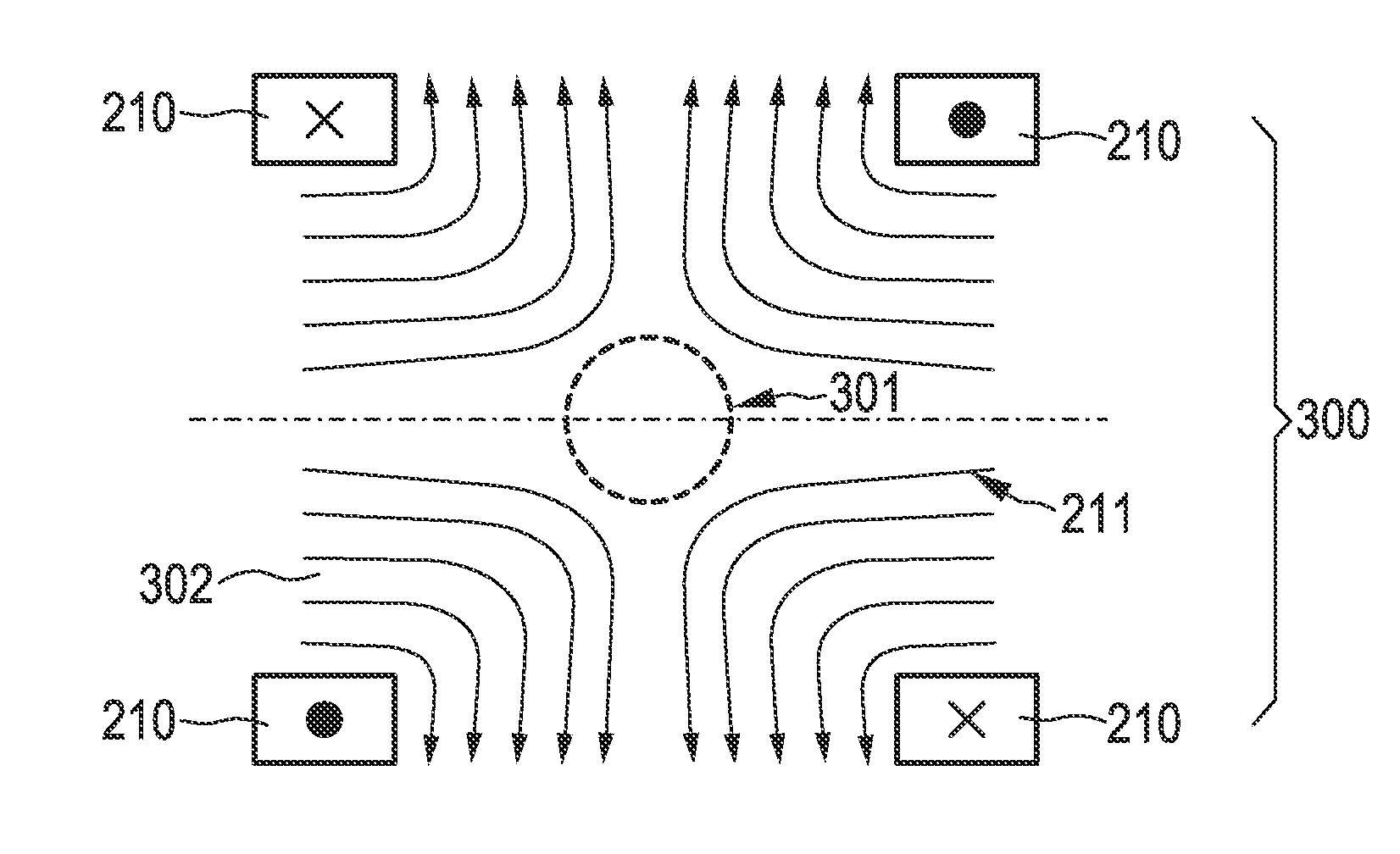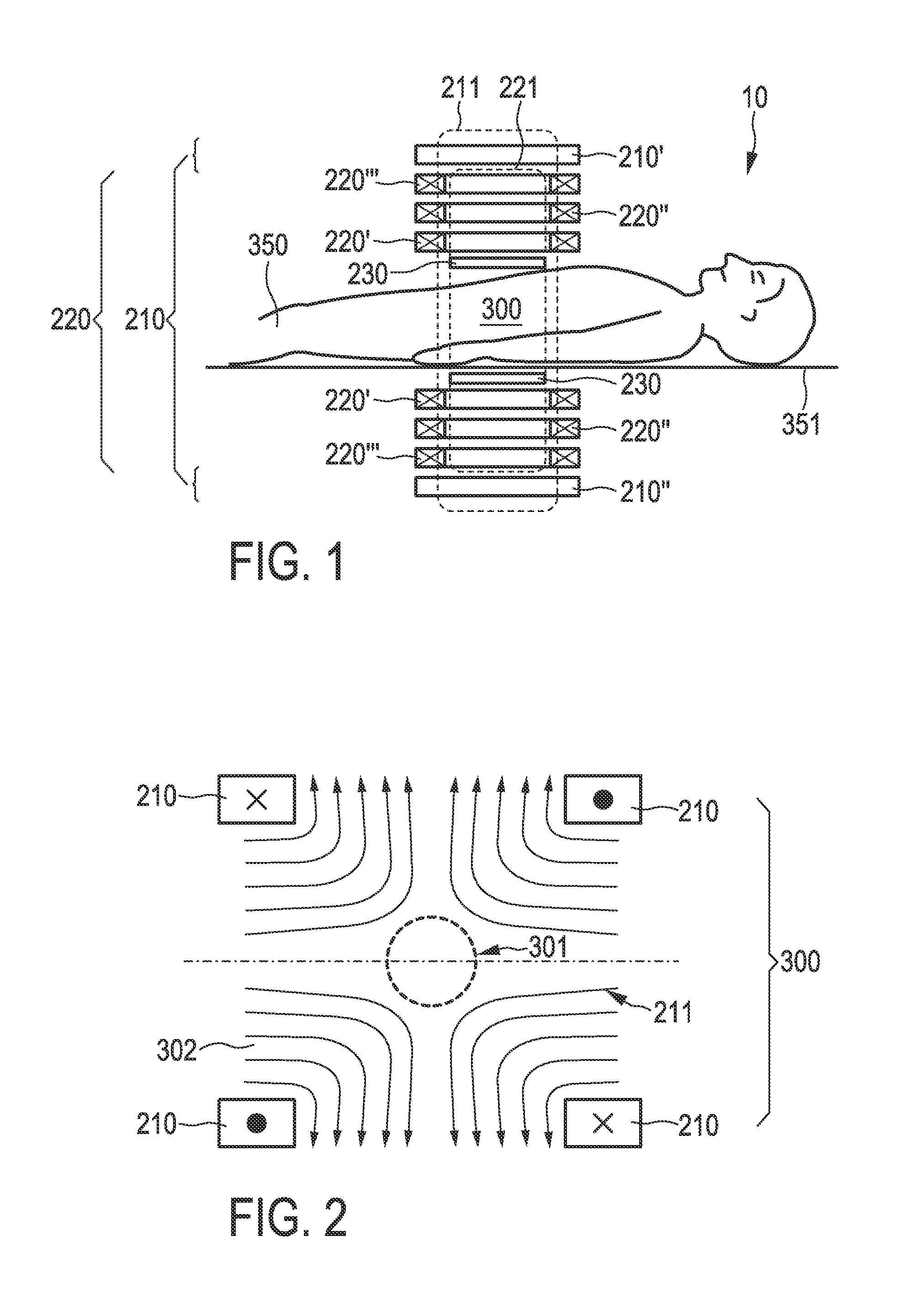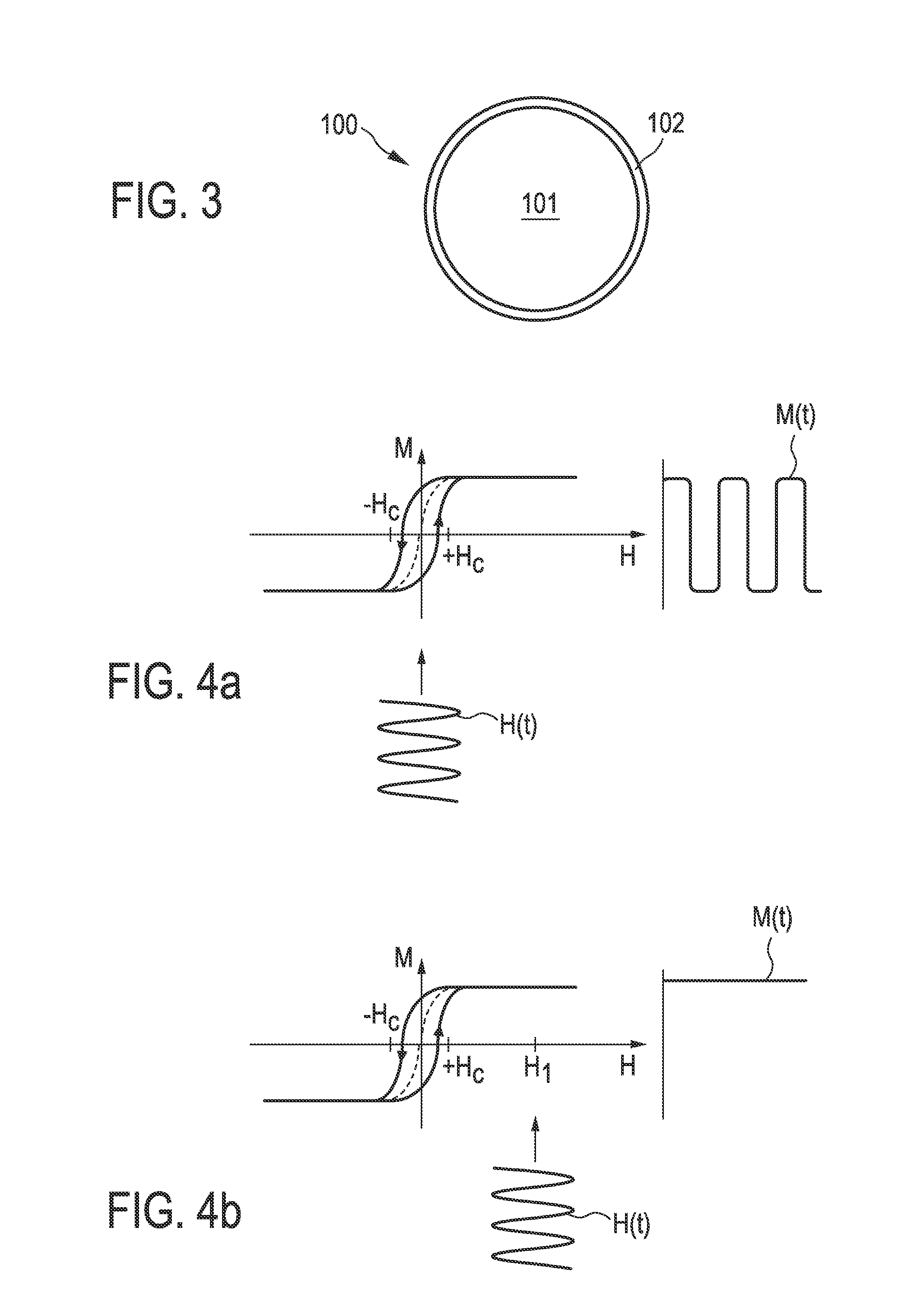Arrangement and method for detecting and/or locating a magnetic material in a region of action
a magnetic material and arrangement technology, applied in the field of arrangement for detecting and/or locating magnetic materials in the region of action, can solve the problems of reducing requiring very long acquisition times, and unable to identify a simple mathematical transformation to reconstruct images from acquired data, so as to reduce the number of rows and increase the snr of the system function.
- Summary
- Abstract
- Description
- Claims
- Application Information
AI Technical Summary
Benefits of technology
Problems solved by technology
Method used
Image
Examples
first embodiment
[0129]The first embodiment according to the present invention which makes use of spatial symmetries (cf. FIGS. 17, 18) essentially requires the following steps for reconstruction:
[0130]1. Using obvious mirror symmetries (cf. FIG. 17)[0131]a. Measure reduced system function at selected positions (e.g. one quadrant / octant or interleaved positions).[0132]b. Generate full system function matrix by mirror operations.[0133]c. Do standard reconstruction with full matrix.
[0134]2. Using a sparsity transform along the spatial directions (cf. FIG. 18)[0135]a. Measure system function at selected positions to obtain coefficients for the function set used to expand the spatial distribution (e.g. Chebyshev coefficients).[0136]b. Since the spatial distribution can be approximated by fewer components in the transform space k, the system function is represented by a sparse matrix and, if the true resolution is smaller than the voxel resolution, the spatial dimension of the vector is smaller than in r...
second embodiment
[0139]The second embodiment according to the present invention which makes use of redundant frequency components (cf. FIG. 19) essentially requires the following steps for reconstruction:[0140]1. Take full or spatially reduced system function matrix.[0141]2. Identify frequency components (rows) with identical spatial pattern (e.g. from theoretical considerations).[0142]3. Sum these components in system function matrix and measurement vector.[0143]4. Invert reduced problem to get image c(x).
[0144]While the invention has been illustrated and described in detail in the drawings and foregoing description, such illustration and description are to be considered illustrative or exemplary and not restrictive; the invention is not limited to the disclosed embodiments. Other variations to the disclosed embodiments can be understood and effected by those skilled in the art in practicing the claimed invention, from a study of the drawings, the disclosure, and the appended claims.
[0145]In the cl...
PUM
 Login to View More
Login to View More Abstract
Description
Claims
Application Information
 Login to View More
Login to View More - R&D
- Intellectual Property
- Life Sciences
- Materials
- Tech Scout
- Unparalleled Data Quality
- Higher Quality Content
- 60% Fewer Hallucinations
Browse by: Latest US Patents, China's latest patents, Technical Efficacy Thesaurus, Application Domain, Technology Topic, Popular Technical Reports.
© 2025 PatSnap. All rights reserved.Legal|Privacy policy|Modern Slavery Act Transparency Statement|Sitemap|About US| Contact US: help@patsnap.com



